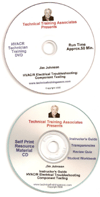ASHLAND CITY, Tenn. — Twenty-four miles west of Nashville, away from the country music center of the world, is the home of the A.O. Smith Water Heater Division Customer Care Facility. Ashland City might be the last place one would expect to find perhaps the finest high-tech training center in the country, but it’s the first place that more than 80,000 people turned to for water heater education in the last 12 months. That is up from modest beginnings, when the annual number of trainees was closer to 1,500. So, what changed?
According to Dave Warren, president, North America Water Heater division, A.O. Smith, who welcomed a group to the grand opening of the renovated Technical Training Facility on July 26, “We really felt that we needed to take another step and invest in technology to put us in a position of offering a variety of training experiences to our downstream channel partners and our direct customers, because our markets are changing.
“This is an example of using the talent that we have within our organization, marrying it with a new technology that's available, so that we could provide better services to the market, while at the same time becoming more efficient in how we're delivering those services,” continued Warren.
About eight years ago A.O. Smith management began hearing from customers that more in-field training was needed. One customer in particular may have launched the video revolution when he talked to A.O. Smith about having no desire to leave work to attend training classes. At the time, the training capacity at the Ashland City facility welcomed about 1,500 individuals annually.
“Customers wanted us to do training in the field,” said David Chisolm, vice president of marketing, A.O. Smith. “Labor shortages have burdened everyone, and pulling people out of the field was becoming less productive. We were wrestling with how to manage our resources internally versus externally. So, we came up with this notion of doing infield training via video and having certifications done more electronically and digitally. Through that one video training session, we trained more people than we did the previous five years on-site here. It opened our eyes to the capabilities of scale and technology. We began to invest in both on-site and remote training and the challenge of marrying the two experiences.”
No-Tech to Hi-Tech
According to Jason Leonard, technical training manager, A.O. Smith, the technology within the water heating industry has advanced dramatically over the last several years. Staying up to date as the industry evolves is critical to the manufacturer and its customers’ businesses. But, finding time for continuing education can be a challenge.
“That's why we are dedicated to providing as many options for training as possible,” Leonard said. “From traditional classroom training and our highly interactive hands-on workshops to self-paced online distance learning options and even live streaming video training events from our state-of-the-art TV studio, we have the solution to fit our customers’ needs.”
From virtually no-tech years ago to virtual reality training today, the company can now meet the needs of its customers as never before. A.O. Smith University just completed a large-scale renovation of its entire technical training infrastructure. Renovations began with the on-site training classroom located at the Customer Care Facility in Ashland City. Leonard dazzled the crowd at the grand opening with a description of the video education investment.
“In the studio, we are running 4k pan, tilt, and zoom cameras, which can all be operated by remote control,” Leonard said. “We are also running Canon CD-100s, which are also broadcast-spec, 4K cameras. The backbone of all of this is a 20 gigabit network. And then we're using an HD [high definition] base to carry out the signal, so we can deliver HDR [high definition resolution] full-quality, 4K content. We can also stream to whatever device that anyone would want to watch this on via standard definition on a phone all the way up to 4K on a desktop computer or to a streaming set-top box. We are looking at things like virtual augmented reality, such as seating someone in a classroom with a 360-degree camera. There isn't a huge expectation for people to have access to this technology yet. But, as it becomes more ubiquitous, we want to be able to be there first, reaching people in the most effective way possible.”
A.O. Smith unveiled some upgrades to its already state-of-the art video studio and provided attendees the opportunity to experiment with a virtual teardown of a hot water tank.
Leonard said that the first video training efforts were awful.
“We started out with one guy in front of a camera talking,” he said. “Oh, they were so bad. We began to think about what would people watch on TV? We then modeled our offering after some shows we had seen. It was always two guys talking together on some type of mechanic show or home remodeling show talking to an audience, so one guy didn't have to carry all the weight, right? We didn't reinvent the wheel; we stole the wheel. We just did the same thing that works on TV, and now our customers watch. Next, we were always thinking about ‘How can we make it a little bit more dynamic?’ And then it became, ‘How Can we take these water heater concepts and make them not sound silly?’ Our constant challenge is: How can we bring it to people? How can we deliver the message?”
The key dynamic inside the A.O. Smith Customer Care Facility is to deliver the most sophisticated and efficient training for customers. It seems an amazing task for a 140-year old manufacturer who also builds quite a large number of hot water heaters.









